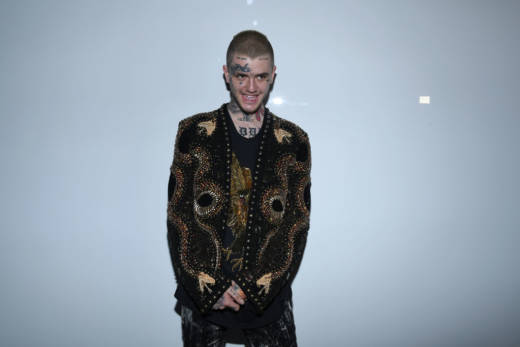On November 15, 2017, at the age of 21, one of the most exciting and charismatic young artists in the country died of an as-yet unspecified drug overdose in the back of his tour bus.
In life, Lil Peep stood out precisely because of how few places he fit in. He was a vulnerable badass. His music was an emo-infused take on hip hop—a new and oxymoronic combination that actually made sense in his hands. Here was a young man with a naturally beautiful face that was marked up by heavy tattoos, the largest of which was a scrawl over his right eyebrow that read "Cry Baby" (the title of one of his 2016 mixtapes). Here was a young man who could look positively feral one moment and wow crowds at Paris Fashion Week the next.
While, on the surface, his death seems typical—ultra-creative, troubled young musician overwhelmed, too soon, by substance abuse—like Lil Peep himself, this particular tragic death is actually something the world has never seen before.
Within hours of his death, a disturbing video started circulating online of Peep, obviously unconscious, sitting upright but limp, head slung backwards, mouth wide open. He died shortly after it was taken. The video was captured by Peep's close friend, Bexey, and originally shared on Snapchat. Bexey, under fire from fans who were horrified by the clip, has since stated that Peep "just fell asleep" and was "snoring." (Lil Peep appears to be making no sound in the video.)


